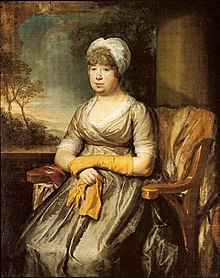
James FitzJames Butler, 2nd Duke of Ormonde, (1665–1745) was an Irish statesman and soldier. He was the third of the Kilcash branch of the family to inherit the earldom of Ormond. Like his grandfather, the 1st Duke, he was raised as a Protestant, unlike his extended family who held to Roman Catholicism. He served in the campaign to put down the Monmouth Rebellion, in the Williamite War in Ireland, in the Nine Years' War and in the War of the Spanish Succession but was accused of treason and went into exile after the Jacobite rising of 1715.

Vice-Admiral Thomas Butler, 6th Earl of Ossory, KG, PC, PC (Ire) was an Irish soldier and politician. He was the eldest son of James Butler, 1st Duke of Ormond but predeceased his father and therefore never succeeded as duke.
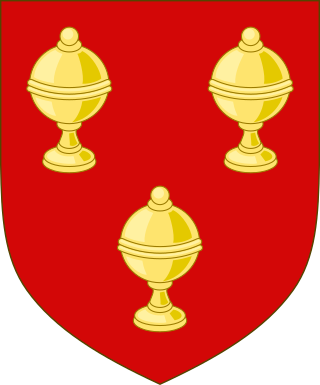
The peerage title Earl of Ormond and the related titles Duke of Ormonde and Marquess of Ormonde have a long and complex history. An earldom of Ormond has been created three times in the Peerage of Ireland.
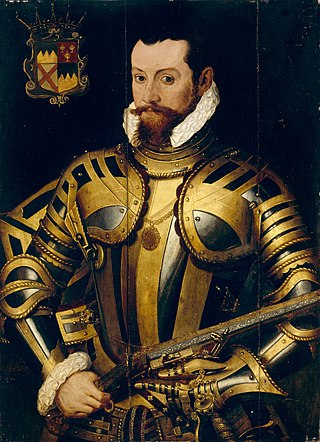
Thomas Butler, 10th Earl of Ormond and 3rd Earl of OssoryPC (Ire), was an influential courtier in London at the court of Elizabeth I. He was Lord Treasurer of Ireland from 1559 to his death. He fought for the crown in the Rough Wooing, the Desmond Rebellions, and Tyrone's Rebellion. He fought his rival, Gerald FitzGerald, 14th Earl of Desmond in the Battle of Affane in 1565.

James Wandesford Butler, 1st Marquess of Ormonde, was an Irish nobleman and politician. He was the second son of John Butler, 17th Earl of Ormonde and Frances Susan Elizabeth Wandesford. He was born at Kilkenny castle on 15 July 1774.
Walter Butler (1703–1783), also known as Walter Butler of Kilcash, and Walter Butler of Garryricken, was the de jure16th Earl of Ormond and 9th Earl of Ossory. He did not assume these titles, as he thought them forfeit as a result of the attainder of the 2nd Duke of Ormonde. In the peerage of Ireland, the titles were successfully claimed in 1791 by his son John, the 17th Earl.
John Butler, known as John Butler of Kilcash, a member of the Irish landed gentry, was de jure15th Earl of Ormond and 8th Earl of Ossory. He did not assume these titles as he thought them forfeit by the attainder of the 2nd Duke of Ormond. He did, however, inherit the Ormond estate from the 1st Earl of Arran through Arran's sister Amelia. In 1791, the title of Earl of Ormond would be successfully claimed by his cousin, the 17th Earl.

Lieutenant-General Charles Butler, 1st Earl of Arran, de jure3rd Duke of Ormonde (1671–1758) was an Anglo-Irish peer. His uncle Richard was the 1st Earl of Arran of the first creation. The titles were re-created for Charles in 1693. His elder brother, the 2nd Duke of Ormonde, was attainted during the Jacobite rising of 1715, but in 1721 Arran was allowed to buy the estate back. At the death of the 2nd Duke, he succeeded as de jure 3rd Duke of Ormonde in the Irish peerage but did not claim the title.
Sir Walter Butler, 11th Earl of Ormond and 4th Earl of Ossory (1559–1633), succeeded his uncle Black Tom, the 10th earl, in 1614. He was called "Walter of the Beads" because he was a devout Catholic, whereas his uncle had been a Protestant. King James I intervened and awarded most of the inheritance to his uncle's Protestant daughter Elizabeth. Ormond contested the King's decision and was for that insolence detained in the Fleet Prison from 1619 until 1625 when he submitted to the King's ruling. He then found a means to reunite the Ormond estate, by marrying his grandson James, who had been raised a Protestant, to Elizabeth's only daughter.
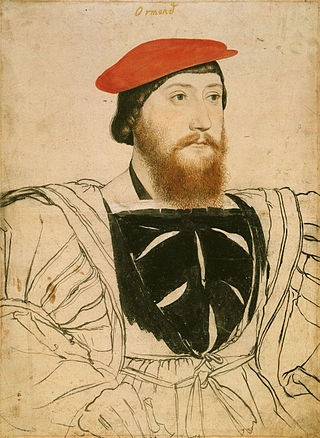
James Butler, 9th Earl of Ormond and 2nd Earl of Ossory, known as the Lame, was in 1541 confirmed as Earl of Ormond thereby ending the dispute over the Ormond earldom between his father, Piers Butler, 8th Earl of Ormond, and Thomas Boleyn, 1st Earl of Wiltshire. Butler died from poison in London.
John Butler, Earl of Gowran (1643–1677) was an MP in the Irish Parliament 1661–1666 before being created Earl of Gowran in 1676. He married but died childless.
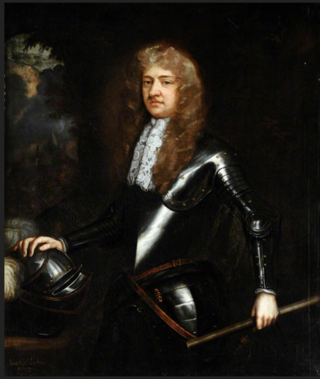
Richard Butler, 1st Earl of Arran (1639–1686) was Lord Deputy of Ireland from 1682 to 1684 while James Butler, 1st Duke of Ormonde, his father, the Lord Lieutenant, was absent in England. He sat in the Irish House of Lords as Earl of Arran and in the English one as Baron Butler of Weston. When William Howard, 1st Viscount Stafford was accused of treason during the Popish Plot, Arran braved the anti-Catholic hysteria and voted not guilty.
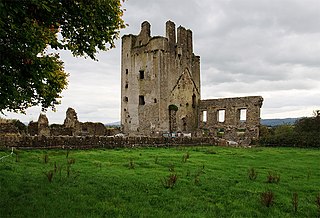
Kilcash Castle is a ruined castle off the N24 road just west of Ballydine in County Tipperary, Ireland. It is in the care of the Irish State. The Butler dynasty has important links to the area.

John Butler of Kilcash was an Irish landowner and soldier. A younger son of James Butler, 9th Earl of Ormond and brother of Thomas Butler, 10th Earl of Ormond, he received Kilcash Castle as appanage. He fought in the Desmond–Ormond conflict and was badly wounded in 1563, just before the Battle of Affane. He was the start-point of the Kilcash branch of the Ormonds and the father of Walter Butler, 11th Earl of Ormond.
Thomas Butler, Viscount Thurles was the son and heir apparent of Walter Butler, 11th Earl of Ormond (1559–1633), whom he predeceased. He lived at the Westgate Castle in Thurles, County Tipperary. He was accused of treason but drowned in a shipwreck off the Skerries in the Irish Sea, before he could be judged. He was the father of the Irish statesman and Royalist commander James Butler, 1st Duke of Ormonde.
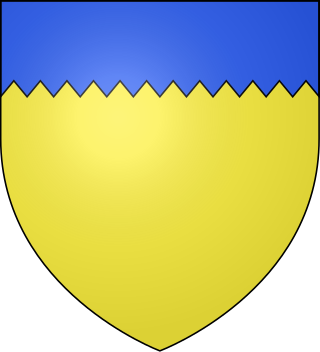
Butler is the name of a noble family whose members were, for several centuries, prominent in the administration of the Lordship of Ireland and the Kingdom of Ireland. They rose to their highest prominence as Dukes of Ormonde. The family has produced multiple titles such as Baron Cahir, Baron Dunboyne, Viscount Ikerrin, Viscount Galmoye, Viscount Mountgarret, Viscount Thurles, Earl of Carrick, Earl of Kilkenny, Earl of Ormond, Earl of Ossory, Marquess of Ormonde and Duke of Ormonde. Variant spellings of the name include le Boteler and le Botiller. The Butlers were descendants of Anglo-Norman lords who participated in the Norman invasion of Ireland in the 12th century. The surname has its origins in the hereditary office of "Butler (cup-bearer) of Ireland", originating with Theobald Walter, 1st Chief Butler of Ireland. The arms of later family members depicted three cups in recognition of their original office.
Richard Butler of Kilcash (1615–1701) was an Irish soldier and landowner, the third son of Thomas Butler, Viscount Thurles and brother of James, 1st Duke of Ormonde. He sided with the Irish Confederacy at the Irish Rebellion of 1641. He scouted the enemy on the morning of the Battle of Cloughleagh. His descendants succeeded to the earldom of Ormond when the senior branch of the family failed in 1758.

Colonel Thomas Butler of Garryricken, also known as Thomas Butler of Kilcash was an Irish Jacobite soldier. He commanded a regiment, Thomas Butler's foot, during the Williamite War and fought at the Battle of Aughrim in 1691 where he was taken captive. His son John would, de jure, become the 15th Earl of Ormond.

Elizabeth Poyntz (1587–1673), known as Lady Thurles, was the mother of the Irish statesman and Royalist commander James Butler, 1st Duke of Ormonde.

Elizabeth Butler, Duchess of Ormond and 2nd Baroness Dingwall reunited the Ormond estate as her maternal grandfather, Black Tom, 10th Earl of Ormond had it, by marrying James Butler, later Duke of Ormond, her second cousin once removed. She had inherited her share of the Ormond estate through her mother, Elizabeth Preston, who was Black Tom's daughter and only surviving child. Her husband had inherited his share from his grandfather Walter Butler, 11th Earl of Ormond, Black Tom's successor in the earldom. Her share was the bigger one and included Kilkenny Castle.
